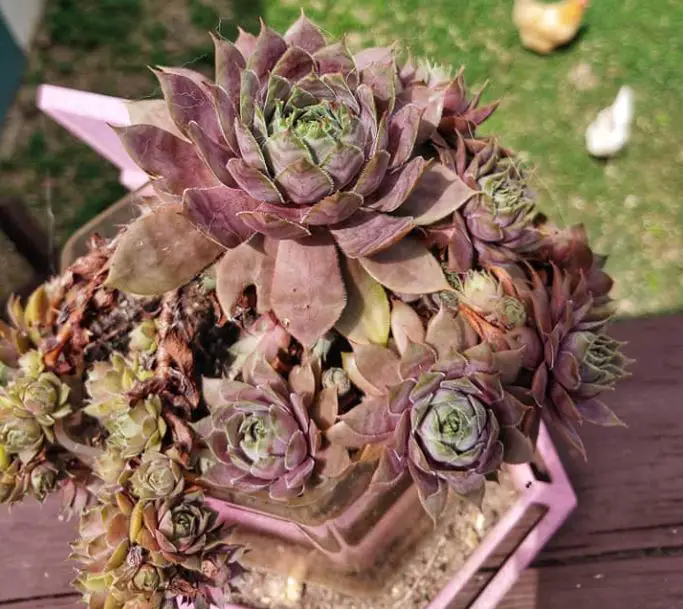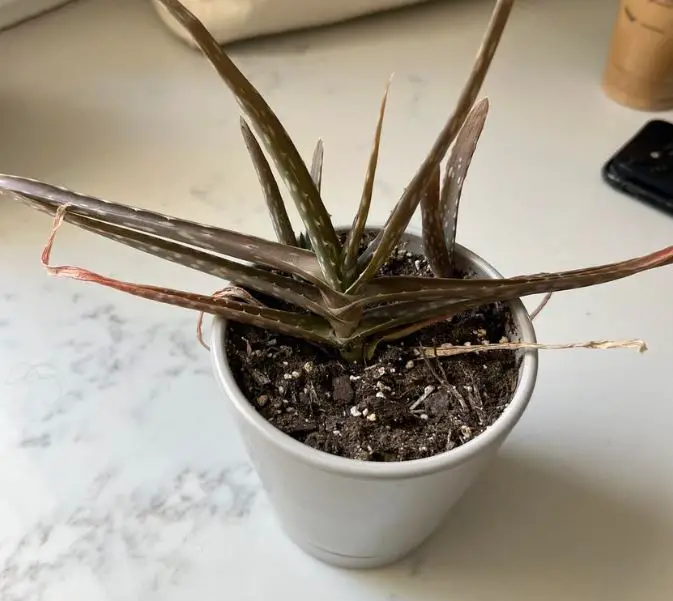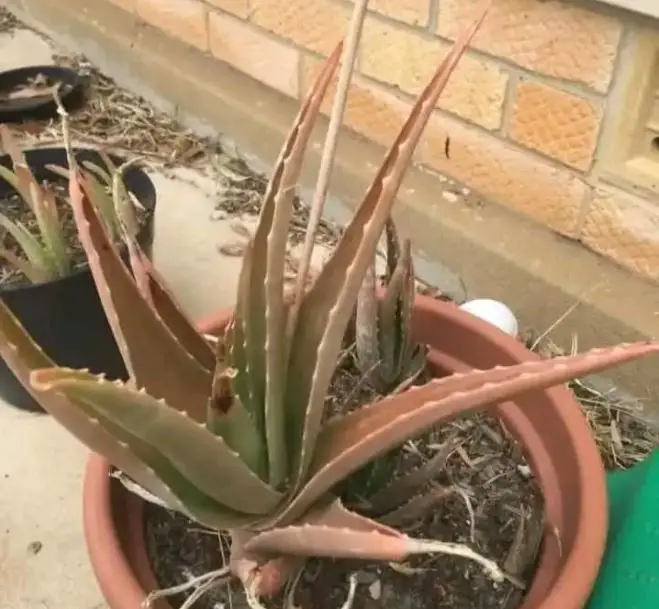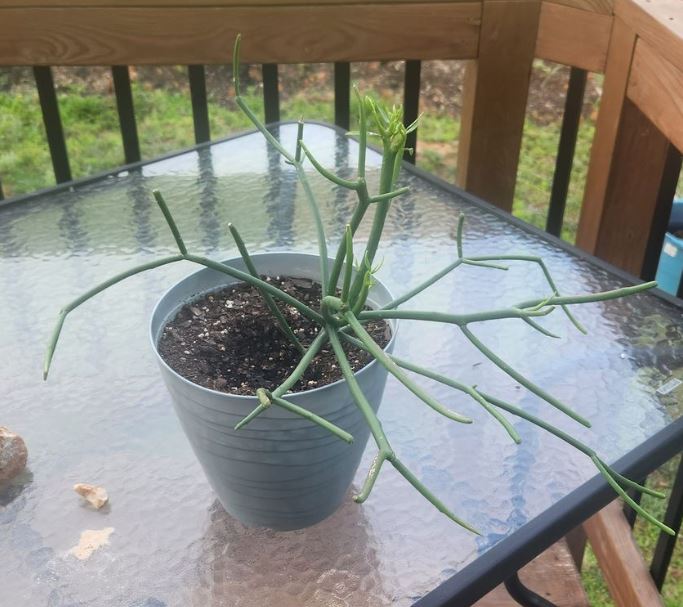Reasons Succulent Leaves are Falling Off and What to Do
Succulents are hardy plants that can survive drought conditions with minimal watering. Over time, succulents may shed older leaves as part of their growth process. However, it should be concerning when your succulent loses young vibrant leaves that need to be growing.
There are a number of reasons succulent leaves may drop leaves prematurely. They include overwatering, underwatering, lack of enough sunlight, temperature extremes, and the problem of insect pests. These are issues that need urgent attention to save your plant.
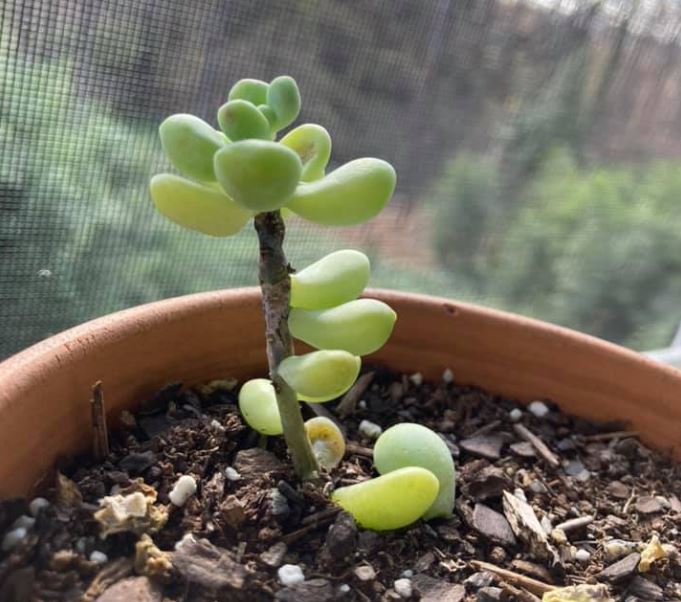
Why succulent leaves are falling off
Leaves are an important part of a plant and for succulents, they play an important role in storing water, photosynthesis, and exchange of gases. If leaves fall off completely, the plant may wilt and die.
The following are potential reasons why your succulent is dropping leaves and what to do.
Overwatering
Overwatering is a major nightmare for any succulent owner. These plants are adapted to drought conditions and they don’t like excess water around their roots. Overwatering a succulent will typically result in root rot and other fungal issues.
Leaves falling off, plant wilting, stunted growth, and brown mushy roots are major signs of root rot in succulents. When roots are badly damaged, they won’t absorb water and nutrients as needed and this causes the plant to lose leaves, shrivel and die.
How to fix
If you suspect overwatering as the cause of leaf drop, stop watering the plant and let the soil dry out completely. If there is no improvement remove the plant from the soil and inspect the roots. If they are badly damaged, cut them off and repot your succulent in a fresh soil mix.
When repotting, use a cactus or succulent potting mix. Further makes sure the pot has drainage holes at the bottom which allows excess water to escape from the soil. If repotting is done properly, your plant should recover in a matter of weeks.
Tip: Before watering your succulent, make sure the top layer of the soil is completely dry. Insert your finger in the soil to check the moisture level. Generally, let the soil dry completely between the waterings.
Underwatering
Underwatering a succulent can also cause the leaves to drop off the plant. Underwatering sets the plant in drought mode and this makes it shed some of its leaves to minimize water loss. However, severe dehydration may cause the plant to wild and die.
Water is an essential resource for all plants. It is what keeps the succulents fleshy besides being a raw material in the process of photosynthesis. This means a plant won’t make its own food when there is no water. Leaves turning yellow and dropping off the plant is a sign of severe dehydration.
How to fix
Fixing the problem of underwatering is relatively easy compared to overwatering. Underwatered succulents will easily recover when you just water them. It’s best to do it cautiously as you know a plant in severe distress can easily be overwatered as roots are not stable enough to absorb water as needed.
It’s good to know that self-watering pots are not recommended for succulents. Most people would think of using them to avoid the problem of underwatering but this won’t turn out well. Self-watering pots can easily overwater the plant and cause root rot. They are only good for plants that don’t have issues when overwatered.
Insufficient sunlight
Succulents can lose leaves when they don’t receive enough sunlight. Light is a very essential resource for green plants because it provides the energy needed for photosynthesis. Without enough light plants won’t produce enough amount of sugar for their growth and survival.
When a succulent is not receiving enough light, leaves may also turn yellow or pale indicating a lack of chlorophyll production. In an attempt to conserve energy, a plant may also lose leaves to direct the available carbohydrates to other important areas.
Without sufficient sunlight, a succulent may also stretch or grow lengthy as stems try to reach more light. This can result in an etiolated succulent with leggy growth.
How to fix
Succulents are adapted to sunny conditions. If your plant is showing symptoms of insufficient sunlight, move it to a brighter location where it can get at least 6 to 8 hours of indirect sunlight. If natural light is insufficient, consider using artificial grow lights.
An east or south-facing window would be a great spot for indoor succulents. These windows offer bright indirect light in the morning hours. You may need to diffuse any direct sunlight with sheer curtains or large planters. Most succulents get scorched when overexposed to direct sunlight.
Tip: Rotate your indoor succulents once a fortnight or every time you water. This will help all the sides of the plant get sunlight evenly.
Temperature extremes
Succulents are highly sensitive to changes in temperatures. Extreme temperature fluctuations can stress out the plant resulting in leaf drop. Temperature requirements for succulents vary depending on the species. But most of them will thrive in warm temperatures between 60°F and 80°F (15°C to 26°C).
In the fall and winter months, succulents prefer cooler temperatures to overwinter. Additionally, most of them will get damaged by frost. So, you need to bring your succulent indoors during winter and keep it in a cool place with temperatures around 55 to 60 degrees Fahrenheit.
Tip: Avoid placing your succulent near drafts, fireplaces, or heating and cooling vents. Succulents also prefer less humid conditions. So, the air around your plants should be kept on the drier side, especially during winter.
Insect pests
While most succulents including cacti are resistant to insect pests the plant can become susceptible if distressed or neglected. Pests such as mealybugs, scale, aphids, spider mites, and fungus gnats can infest your plant and cause leaf loss.
Insect pests are notorious for sucking juices from succulents. This not only deprives the plant of important nutrients but also exposes it to bacterial and fungal infections. Houseplant pests such as whiteflies reproduce quickly and their large numbers can be a great indoor nuisance.
How to treat
Inspect your plant for any signs of pests such as webbing, white fuzz, spots on leaves or stems, and tiny bugs in the soil. If detected, treat the infestation promptly using neem oil or insecticidal soap. Make it a regular habit to thoroughly inspect your new and old plants and treat them for pests or diseases as needed.
Final Thought
Succulents are popular indoor plants due to their stunning beauty and ease of maintenance. However, without proper conditions, your plants may experience various problems including leaf drop. If your succulent leaves are falling off, identify the underlying cause and treat it promptly.
My name is Diane M Lewik, and I am the founder of this website. I am a degree holder in plant biology from the University of California – Berkeley. Over years, I have cultivated a vast collection of succulents and I have learned a great deal about how to grow and care for these unique plants.
